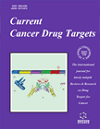-
s Mouse Models as a Translational Platform for the Development of New Therapeutic Agents in Multiple Myeloma
- Source: Current Cancer Drug Targets, Volume 12, Issue 7, Sep 2012, p. 814 - 822
-
- 01 Sep 2012
Abstract
Mouse models of multiple myeloma (MM) are basic tools for translational research and play a fundamental role in the development of new therapeutics against plasma cell malignancies. All available models, including transplantable murine tumors in syngenic mice, xenografts of established human cell lines in immunocompromised mice and transgenic models that mirror specific steps of MM pathogenesis, have demonstrated some weaknesses in predicting clinical results, particularly for new drugs targeting the human bone marrow microenvironment (huBMM). The recent interest to models recapitulating the in vivo growth of primary MM cells in a human (SCID-hu) or humanized (SCID-synth-hu) host recipient has provided powerful platforms for the investigation of new compounds targeting MM and/or its huBMM. Here, we review and discuss strengths and weaknesses of the key in vivo models that are currently utilized in the MM preclinical investigation.


